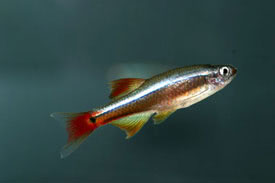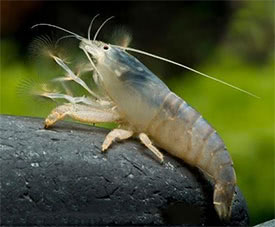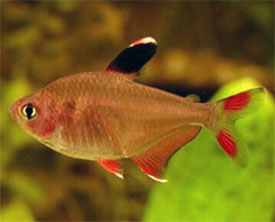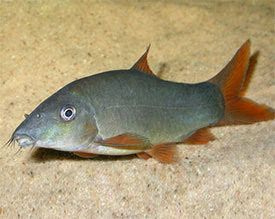
 Magyarul / Hungarian
Magyarul / Hungarian
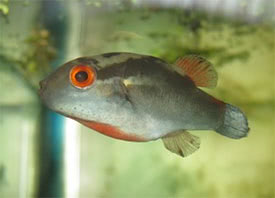
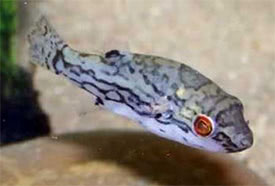
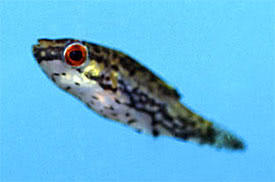
- Scientific name: Carinotetraodon lorteti
- Synonyms: Tetraodon lorteti, Carinotetraodon chlupatyi, Tetraodon somphongsi, Monotreta tiranti
- Common name: Redeye Puffer, Red Eye Puffer
- Group: Other fishes
- Habitat: Asia; Thailand, Cambodia, Vietnam, Malaysia and Indonesia.
- Size: 6 cm
- Biotope: Found in slow-moving parts of rivers, and in standing ponds.
- Social behavior: Despite its size, it can be very aggressive and territorial. Not recommended for the community tank, it is best kept in a single species setup.
- Diet: Carnivorous; Snails, shellfish and worms are accepted. They eat frozen foods as well, but dried foods are usually not accepted. It should be fed snails regularly, in order to maintain its teeth.
- Breeding: Quite hard
- Tank: Minimum 40 litres
- Population: 1 pair for 60 litres
- Decoration: Lots of aquatic plants and roots to provide cover and hiding places. The fish may eat soft-leaved plants. Floating plants are recommended as they diffuse the light, and the fish usually become more active.
- Temperature: 24-28 °C
- pH: 6-7.5
- Hardness: 3-10 NK°
- Lifespan: 5-8 years
Description: The Red Eye Puffer is completely freshwater fish, with no salt at all being needed. Males are brownish on their back and cream-coloured on their belly-area. As its namesake indicates, it has red pigmentation to its eyes. There are two yellow bands running across the head from eye to eye, and additional bands run from the pectoral fin diagonally upwards to the dorsal fin. The tail is greenish-blue and edged with white, while the anal and dorsal fins are usually reddish in hue. Females are smaller, mottled brown on their backs, and almost uniformly cream-coloured below. They are able to change their colors depending on the surroundings or mood.
Like most puffers it's very sensitive to bad water conditions like nitrates and ammonia, so regular partial water changes are essential. Their teeth grow continuously and may become a problem, so hard shelled foods such as shellfish and snail diet can help to grind their teeth down. Puffers can inflate their stomachs with water or air, and become 2 or 3 times their normal size so can easily scare away many potential predators.
Males are the more colorful, with a bright red belly, while females are duller. Breeding is not easy, but possible in aquarium. Because of their unpredictably aggressive behavior a 60 litres breeding aquarium with a sponge-filter is a minimum. Plant the tank densely with fine-leaved plants like Java moss. The water should be soft (gH 5), acidic (pH 6.0-6.5) and warm (26-28 °C). Condition the fish on a high quality diet, such as small shellfish and snails. During spawning aggression between the fish diminishes, but courtship is still quite vigorous. The eggs are usually deposited onto aquatic plants, and they hatch in 30 hours. The parents should be removed from the tank at this point, as they will prey on the fry. The fry are exceptionally difficult to raise as most foods appear to be unsuitable for them. Try to feed them with Cyclops nauplii.























